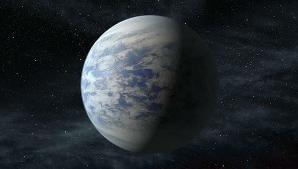February 18, 2014
LONDON: While Nasa is busy developing an Asteroid Redirect Mission (ARM) — a first ever mission to identify, capture and redirect an asteroid, earth experienced a close shave with a hurtling giant.

February 18, 2014
LONDON: While Nasa is busy developing an Asteroid Redirect Mission (ARM) — a first ever mission to identify, capture and redirect an asteroid, earth experienced a close shave with a hurtling giant.

The ten-ton meteor that entered the earth’s atmosphere at 33,000mph ripped across the sky above Russia’s Ural Mountains.
An asteroid as big as three football fields flew past earth on Monday at 27,000 miles per hour.
Dubbed as "potentially hazardous", the asteroid came close to about two million miles from causing serious damage to the blue planet.
Named 2000 EM26, the asteroid that was first discovered on March 5, 2000 was a big rocky giant — about 885 feet in diameter.
The incident comes a year and two days after another asteroid ripped through the skies over Chelyabinsk, Russia and damaged thousands of buildings and injured 1200 people.
The ten-ton meteor that entered the earth's atmosphere at 33,000mph ripped across the sky above Russia's Ural Mountains.
The Slooh Space Camera followed the asteroid's journey all of Monday night. Meanwhile Nasa's Asteroid Redirect Mission (ARM) will use capabilities in development, including the new Orion spacecraft and Space Launch System (SLS) rocket, and high-power Solar Electric Propulsion to capture an asteroid in the new future.
It is believed to be part of Nasa's goal of sending humans to Mars in the 2030s. The mission represents an unprecedented technological feat, raising the bar for human exploration and discovery, while helping protect our home planet and bringing us closer to a human mission to one of these intriguing objects.
Nasa is assessing two concepts to robotically capture and redirect an asteroid mass into a stable orbit around the moon. In the first proposed concept, Nasa would capture and redirect an entire asteroid. In the alternative concept, Nasa would retrieve a large, boulder-like mass from a larger asteroid and return it to this same lunar orbit.
In both cases, astronauts aboard an Orion spacecraft would then study the redirected asteroid mass in the vicinity of the moon and bring back samples. Very few known near-Earth objects are ARM candidates. Most known asteroids are too big to be fully captured and have orbits unsuitable for a spacecraft to redirect them into orbit around the moon. Some are so distant when discovered that their size and makeup are difficult for even our most powerful telescopes to discern. Still others could be potential targets, but go from newly discovered to out of range of our telescopes so quickly there is not enough time to observe them adequately.
"We'd be looking for an asteroid smaller than about 40 feet across," said Paul Chodas from the Near-Earth Object Program Office. "There are hundreds of millions of objects out there in this size range, but they are small and don't reflect a lot of sunlight, so they can be hard to spot. The best time to discover them is when they are brightest, when they are close to Earth".
Asteroid surveys detect hundreds of such moving objects in a single night, but only a fraction of these will turn out to be new discoveries.
"If an asteroid looks as if it could meet the criteria of size and orbit, our automated system sends us an email with the subject New ARM Candidate," said Chodas. "When that happens, and it has happened several dozen times since we implemented the system in March of 2013, I know we'll have a busy day".
Tracking near-Earth asteroids has been a significant endeavor for Nasa and the broader astronomical community, which has discovered 10,713 known near-Earth objects to date.
Courtesy: PTI
















































































































